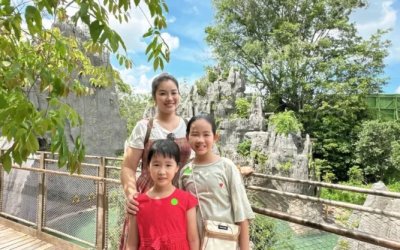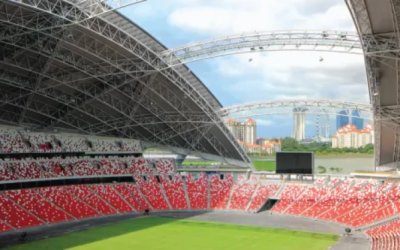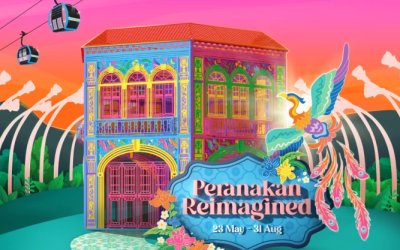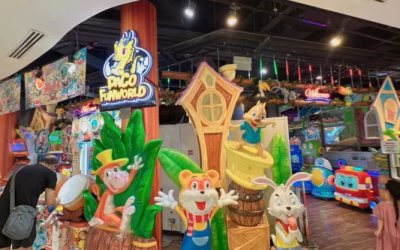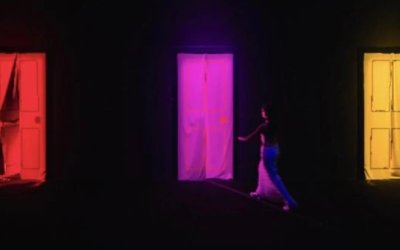Exhibition Information
展览信息
when and how to visit the exhibition? click the below image
点击以下图片获取观展详情
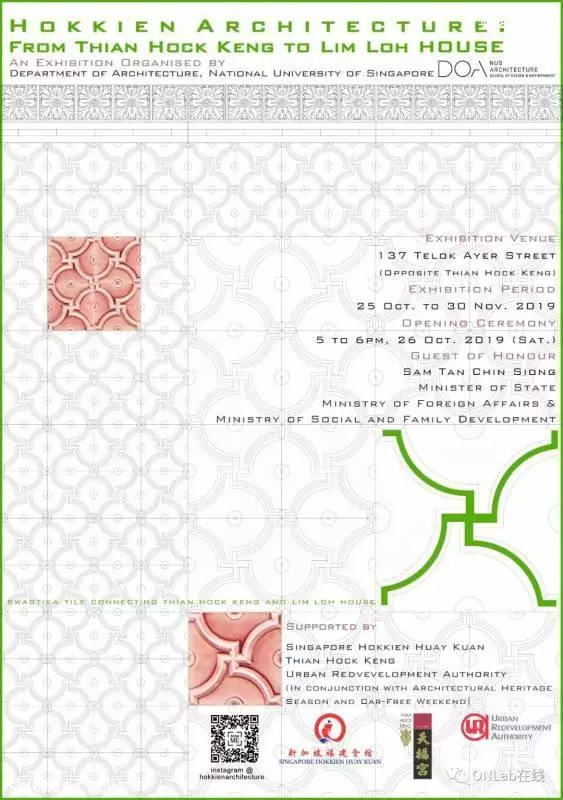
Forewords
前言
本次展览呈现二零一八至二零一九学年新加坡国立大学建筑系学生的闽南侨乡行所学。凭借面对天福宫的场地优势,突出这座在新加坡地位崇高的福建人庙宇,与头家林路(林谋盛少将的父亲)在南安祖籍地修建的宗祠之间的关联,展示新加坡华族建筑的影响,揭示先民将南洋式样与审美趣味带回福建。同时纪念林谋盛少将牺牲七十五周年,展现他鲜为人知的家庭生活,为自由与正义做出的牺牲。
This exhibition features learning from the Southern Fujian fieldtrips made in AY2018-2019 by students from the Department of Architecture, National University of Singapore. Taking advantage of the immediate visual association with Thian Hock Keng, this site-specific exhibition highlights the connection between this predominant Hokkien temple in Singapore and the ancestral houses in Nan'an built by Towkay Lim Loh (Major-General Lim Bo Seng's father).
It features Chinese architectural influences in Singapore, as well as how the unique style and sense of aesthetics of Nanyang (South Seas) had been brought by the early settlers to their hometowns in Fujian. To commemorate Major-General Lim Bo Seng’s 75th death anniversary, this exhibition provides vignettes to his little known family life and attempt to piece together a richer picture of one of Singaporean’s well-known martyr.
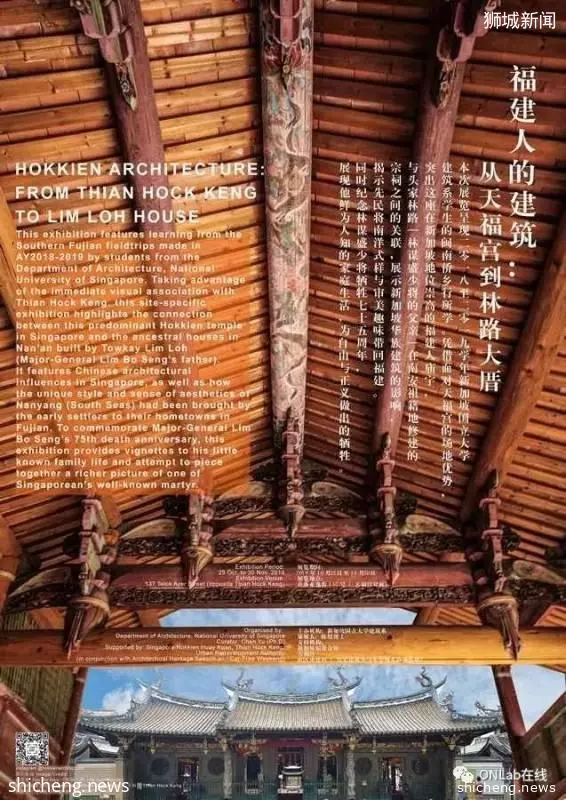
What is the link between Thian Hock Keng and Lim Loh House?
天福宫与林路大厝有什么关联?
自一八四零年起,天福宫一直是新加坡福建人的信仰中心,也是福建人的建筑典范,一九零六年天福宫进行大规模翻修,铺设瓷砖与地砖。几乎在同一时期,林路在南安后埔老家兴建九十九间大厝,闽南俗语称:“有林路富,无林路厝”,指的是林路大厝建筑的恢弘奇巧。林路大厝采用与天福宫一样的瓷砖与地砖,表达他对这种建筑装饰的喜爱,也显示南洋文化在福建的影响。
Since 1840, Thian Hock Keng has been the spiritual centre of Hokkien community, and a prime example of Hokkien architecture in Singapore. In 1906, Thian Hock Keng underwent a large-scale renovation, during when decorative and flooring tiles were installed. Almost at the same time, Lim Loh built his ninety-nine room house in hometown Houpu, Nan’an. There is an old saying in Southern Fujian: “One may have wealth as much as Lim Loh, but one will not have a house like his!”, referring to the extraordinary architecture of Lim Loh’s house. The tiles used in Thian Hock Keng were also found in Lim Loh House. This coincidence shows his preference for this kind of architectural ornament, and therefore the influence of Nanyang in Fujian.
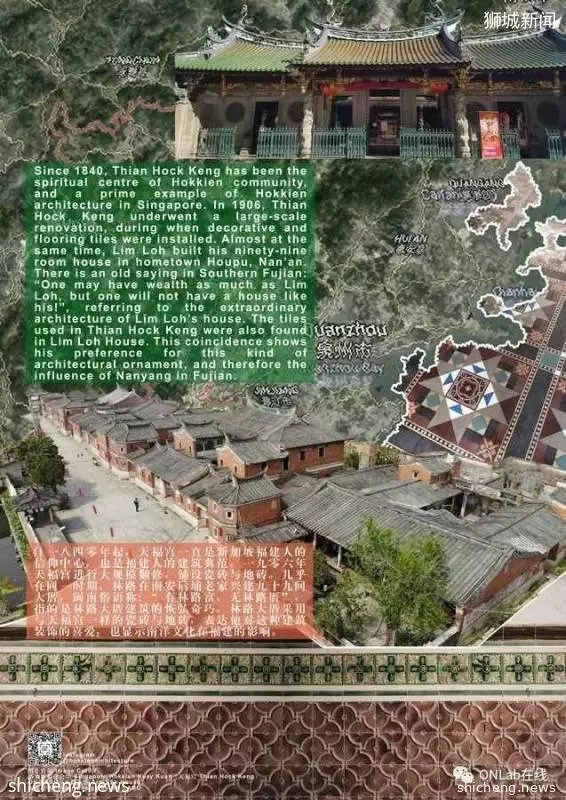
Who is Lim Loh?
谁是林路?
林路出生于福建南安后埔(今省新镇满山红村),年少时下南洋,后在新加坡成为成功建筑商、商人和慈善家,活跃于华社,领导兴建了许多标志性建筑。其十一子林谋盛为新马抗日英雄。
Born in Houpu, Nan’an, Lim Loh (1852~1929) was a self-made man. He migrated to Malaya at a young age and became a successful building contractor, businessman and philanthropist. He was active in Chinese community and led the construction of many landmarks in Singapore. War hero Lim Bo Seng was his 11th son.
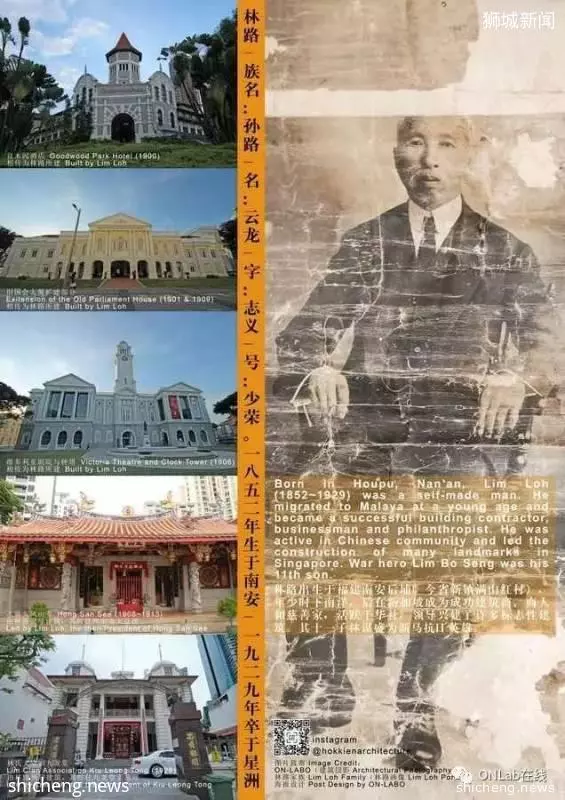
War Hero Lim Bo Seng and His Sacrifice
抗日英雄林谋盛与他的牺牲
“林少将是在中国出世的,当他还是儿童的时候,就来到此地,他在新嘉坡的商场以及政坛上都树立了声誉,他为他自己所选择的邦土而战斗,他更为马来亚的自由而牺牲他的性命。”
林庆年
林烈士谋盛纪念委员会主席
一九五四年六月二十九日
“General Lim was born in China. He came to Malaya when he was still a boy and made for himself a good name in business as well as in the political fields in Singapore. He fought for this land of his adoption, and he died for the freedom of Malaya.”
Lim Keng Lian
Chairman of Maj.-Gel. Lim Bo Seng Memorial Committee
29 June 1954
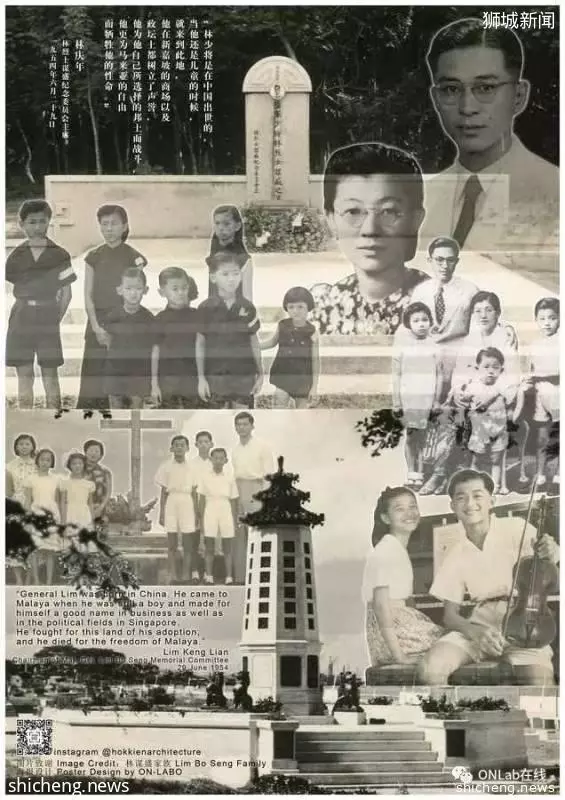
Lim Bo Seng's Birthplace and the Education He Received
林谋盛的出生地与他所接受的教育
林谋盛一九零九年出生、成长于南安林路大厝,其父林路在叠楼二层厅堂留下族训,引用朱柏卢之治家格言教导子孙后代。
Lim Bo Seng (1909~1944) was born and grew up in Lim Loh House, Nan’an. To nurture and educate his descendents, Lim Loh had the family maxims inscribed on the walls of the main hall, which was situated on the second level of the Stacked Block. The writings were quotes from Zhu Bolu’s “Maxims for Managing the Home”.
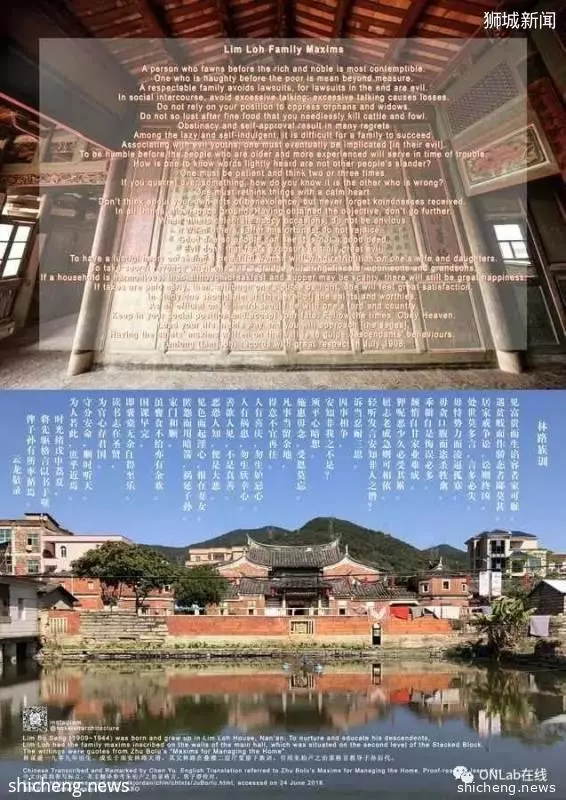
Significane of Lim Loh House
林路大厝的意义
林路大厝建筑工艺精湛,建筑创新与实验手法、装饰与纹样、材料与工艺,有着南洋影响,对于理解新加坡建筑历史有着深远意义。
Lim Loh house shows excellent art-crafting, creative solutions to technical challenges and experimental use of vernacular materials to achieve western detailing. The House's ornamentation, design motifs, use of materials and building technique are indications of Nanyang influence. The study of Lim Loh House enables better understanding of the architecture history in Singapore.
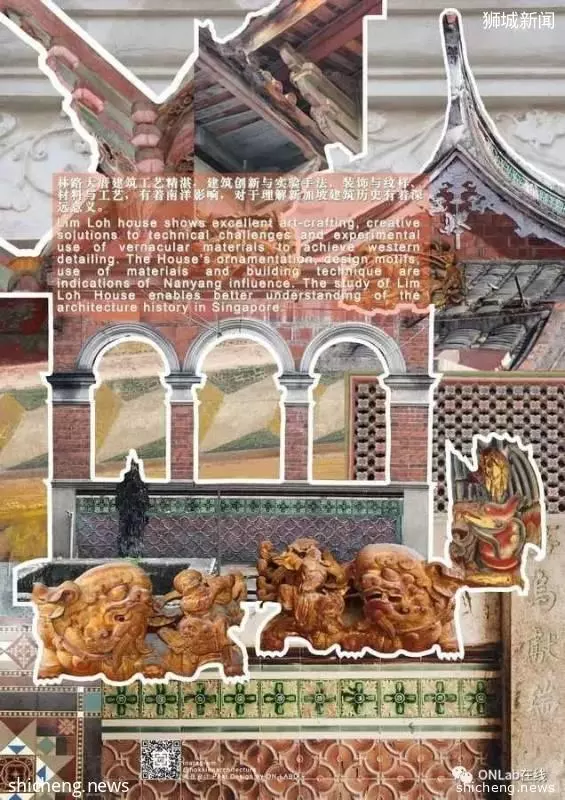
Southern Fujian Fieldtrip
闽南侨乡行
走进侨乡,面对一栋栋废弃闲置的侨房,推开紧闭的门扉,触摸著曾经辉煌的痕迹,眼前似曾相识的南洋风物,斯人已逝,今人已散。福建先辈在不同领域为新加坡的发展做出重大贡献,闽南侨乡行提供了难得的机会,让我们了解先辈与祖家之间的个人情感,我们希望更多的人能探访他们的祖籍地,那里有共同的记忆与共享的文化资产。
Historic buildings are physical links to our past. Revisiting hometown of our forefathers, we listened to stories in the past and gained insights to philosophy and world views of a generation that has helped built modern Singapore. These stories, told through memorabilia and architecture, are little known beyond local communities. Our fieldtrips in Southern Fujian provided a rare opportunity to study our forefathers' personal relationships with their hometowns. We hope that more people will visit their ancestral places where there are shared memories and common heritage.
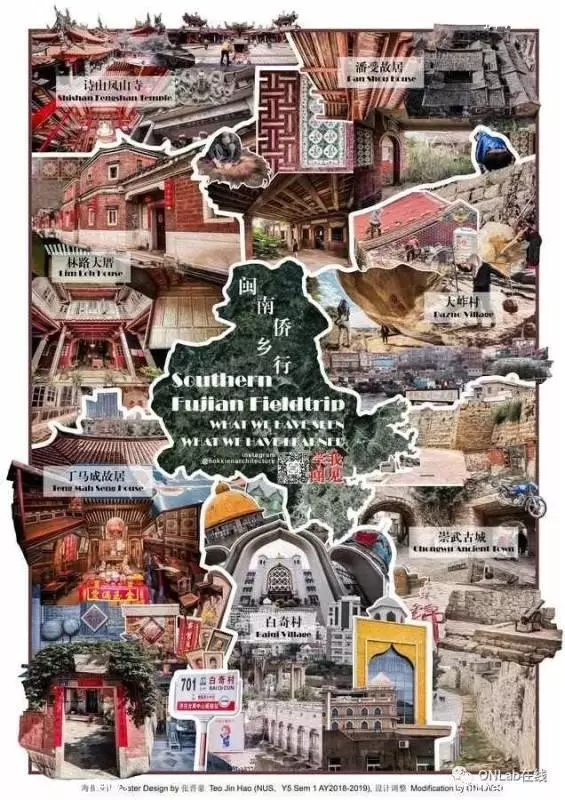
Three Key Aspects of the Field Study
考察的三大要点
华侨宅邸 OVERSEAS CHINESE HOUSE
起屋、休坟、兴学是华侨人生三大金福,我们参访了一些由新加坡福建人在不同时期兴建的华侨宅邸,包括林路大厝、丁马成故居、潘受故居、黄奕欢故居等。
The three golden joys of an overseas Chinese is to build a house, grave and school in one’s hometown. We visited several overseas Chinese houses built in different periods of time by Hokkien from Singapore, including Lim Loh House, Teng Mah Seng House, Pan Shou House, Ng Aik Huan House, etc.










